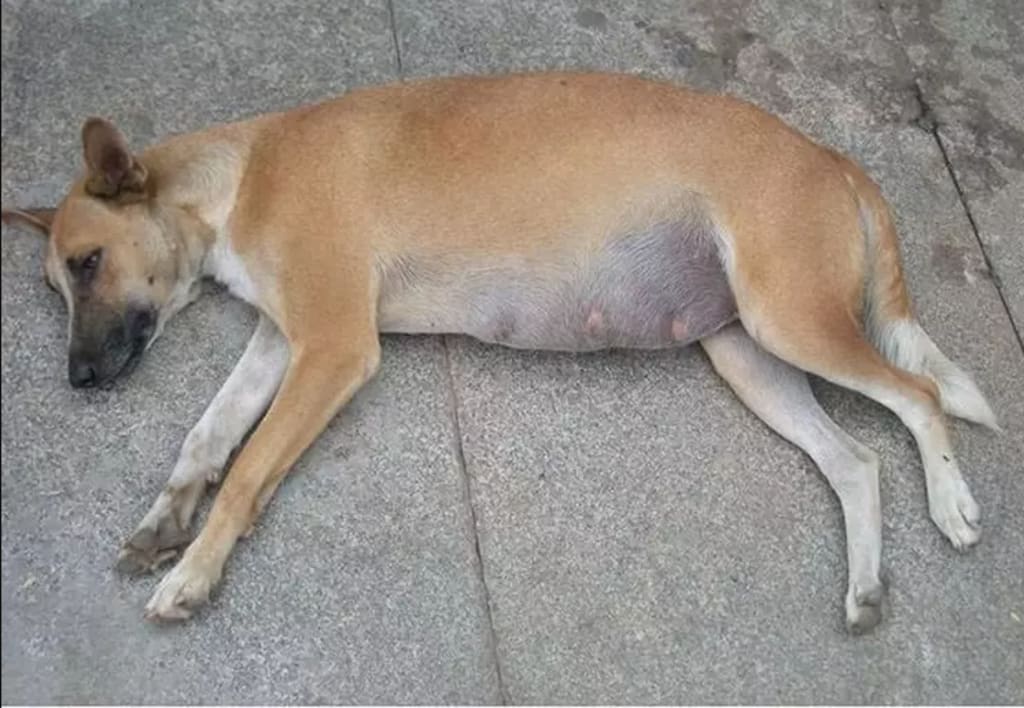Why do some dogs look skinny but have rolls of fat around their stomachs?
The Skinny-Fat Paradox: Understanding Canine Body Composition

Dogs come in various shapes and sizes, and sometimes their body composition can be puzzling. You may encounter dogs that appear skinny overall but have rolls of fat around their stomachs. This phenomenon, known as the skinny-fat paradox, can be intriguing and raise questions about the health and well-being of these dogs. In this article, we will delve into the reasons behind this peculiar occurrence and explore various factors that contribute to canine body composition.
The Skinny-Fat Paradox: Understanding Canine Body Composition
When we refer to a dog as skinny-fat, it means that the dog appears thin or lean overall but has noticeable pockets of fat, particularly around the stomach area. This can create a contrast between their general appearance and the localized presence of fat rolls. It's essential to understand that a dog's body composition is influenced by several factors, including breed, genetics, age, diet, exercise habits, and underlying medical conditions.
Factors Influencing Canine Body Composition
- Breed and Genetics
Different dog breeds have varying body types and predispositions to store fat. Some breeds naturally have leaner body structures, while others are more prone to carrying excess weight. Genetics also play a role in determining how a dog's body stores and distributes fat, which can contribute to the skinny-fat appearance.
- Age and Development
A dog's body composition can change as they age. Puppies often have a higher metabolism and burn calories quickly, which helps maintain their lean appearance. However, as dogs mature, their metabolism may slow down, and if their diet and exercise routines are not adjusted accordingly, they can develop pockets of fat while still appearing skinny.
- Diet and Feeding Habits
A dog's diet and feeding habits significantly impact their body composition. Feeding an imbalanced diet or providing excessive treats and table scraps can lead to weight gain and the accumulation of fat, even if the dog appears skinny overall. Poor feeding practices can disrupt the dog's energy balance and contribute to the development of rolls of fat around the stomach.
- Exercise and Physical Activity
Regular exercise and physical activity are crucial for maintaining a healthy body composition in dogs. Dogs that lack sufficient exercise may not burn enough calories, resulting in a higher likelihood of developing fat deposits around their stomachs. A sedentary lifestyle can contribute to the skinny-fat paradox, as the dog's overall appearance remains lean while fat accumulates in specific areas.
Medical Conditions and Their Impact on Body Composition
Several medical conditions can affect a dog's body composition and contribute to the skinny-fat appearance. It's essential to rule out underlying health issues that may require specific treatment or dietary adjustments. Some common medical conditions include:
- Hypothyroidism
Hypothyroidism is a hormonal disorder that can cause weight gain and alter a dog's body composition. Dogs with an underactive thyroid gland may appear skinny but have difficulty losing weight due to a slower metabolism.
- Cushing's Syndrome
Cushing's syndrome, also known as hyperadrenocorticism, can lead to weight gain and redistribution of fat in dogs. Affected dogs may develop a pot-bellied appearance while still appearing thin elsewhere.
- Intestinal Parasites
Parasitic infestations, such as worms, can interfere with a dog's nutrient absorption and result in weight loss and poor body condition. Despite being underweight, these dogs may display localized fat deposits.
- Pancreatic Issues
Pancreatic disorders can impact a dog's ability to properly digest and absorb nutrients, leading to weight loss or an uneven distribution of fat. This can create the illusion of a skinny body with pockets of fat.
Addressing the Skinny-Fat Phenomenon
If your dog displays the skinny-fat paradox, there are steps you can take to address their body composition and overall health:
- Veterinary Consultation
Consulting with a veterinarian is crucial to rule out any underlying medical conditions that may contribute to the skinny-fat appearance. A comprehensive examination and appropriate diagnostic tests can help identify or exclude potential health issues.
- Balanced Diet and Portion Control
Providing a balanced diet that meets your dog's nutritional needs is essential. Work with your veterinarian or a professional canine nutritionist to determine the appropriate type and amount of food for your dog's age, breed, and activity level. Portion control is vital to prevent overfeeding and weight gain.
- Regular Exercise Routine
Establishing a regular exercise routine is essential for maintaining a healthy body composition in dogs. Engage your dog in activities such as daily walks, play sessions, and interactive toys that promote physical activity and burn calories. Consult with your veterinarian to determine the appropriate exercise intensity and duration for your dog.
- Monitoring Health and Progress
Regularly monitor your dog's weight, body condition, and overall health. Keep track of any changes in their body composition and adjust their diet and exercise routines accordingly. Regular veterinary check-ups can help ensure your dog's continued well-being.
Conclusion
The skinny-fat paradox in dogs can be puzzling, but understanding the factors that influence body composition can provide clarity. A combination of genetics, diet, exercise, and underlying medical conditions contributes to this phenomenon. By working closely with a veterinarian, providing a balanced diet, maintaining a regular exercise routine, and monitoring your dog's health, you can help them achieve a healthy body composition.
Clich here to get The ULTIMATE Guide to DOG Health
About the Creator
Mastering Dog Training & Care
"Mastering Dog Training & Care" - Your go-to resource for all things dog-related! Discover effective training techniques and expert tips for optimal dog care.
https://sites.google.com/view/theultimateguidetodoghealth/trang-ch%E1%BB%A7






Comments
There are no comments for this story
Be the first to respond and start the conversation.